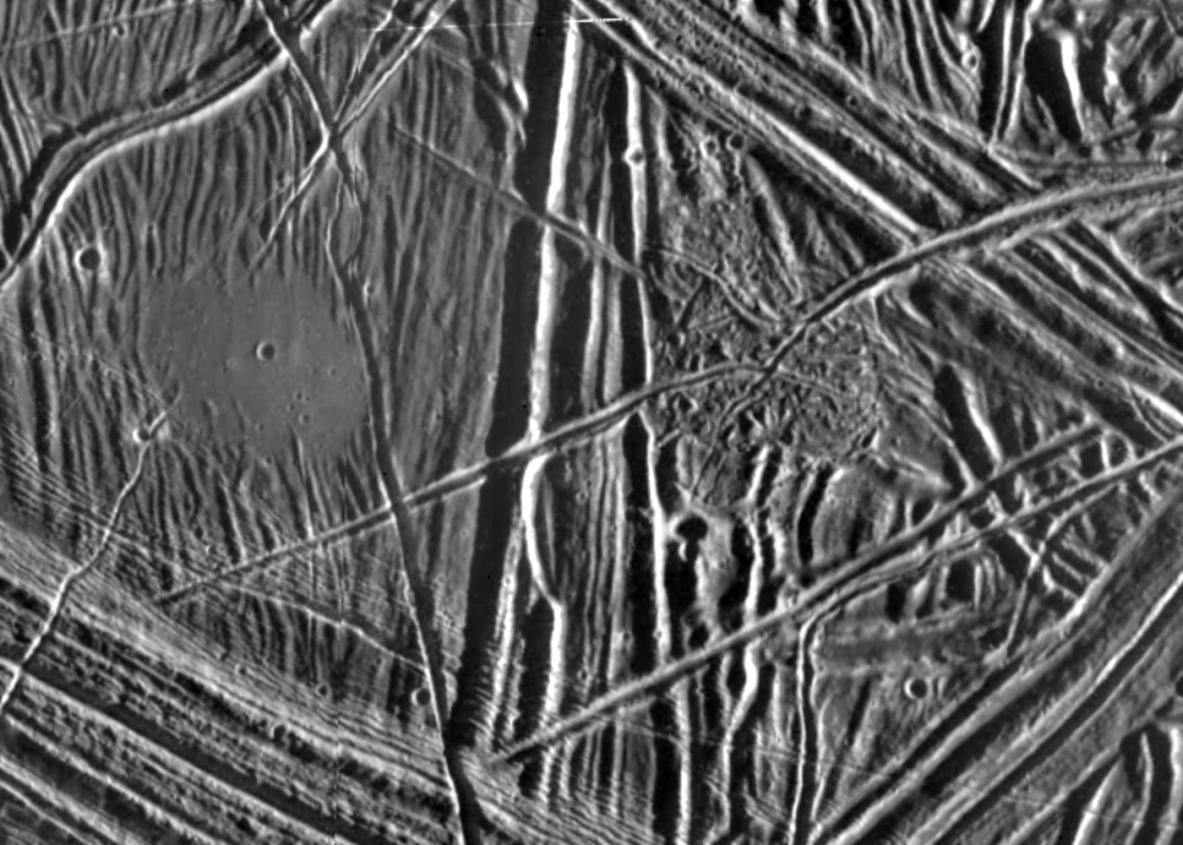Did you know that Europa, one of Jupiter's moons, may have an ocean of liquid water beneath its icy surface?
Real and false color images of Europa (click to view)
 |
Close up of Europa's surface (click to enlarge)
 |
The four moons that Galileo discovered near Jupiter in 1610
provided the key proof that all celestial objects did not orbit
Earth. Europa, the smallest of the four, is a very unusual moon.
Unlike other satellites which tend to be rocky, Europa's surface is
made entirely of ice. In addition a close look at Europa's surface
reveals it to be completely covered in "scars." These scars are formed
from the continual cracking, melting, and refreezing of Europa's icy
shell. These active geological processes lead astronomers to believe
that there might be a vast ocean of liquid water underneath Europa's
frozen surface. Europa's liquid reservoir probably contains more
water than all of Earth's oceans combined. It is heated by tides
raised on the satellite by Jupiter and by thermal vents that may exist
on the ocean floor. Warm salty water was conducive to the formation
of life on Earth, leading to the intriguing possibility of alien life
lurking beneath Europa's icy shell. For more on Europa, click here.


